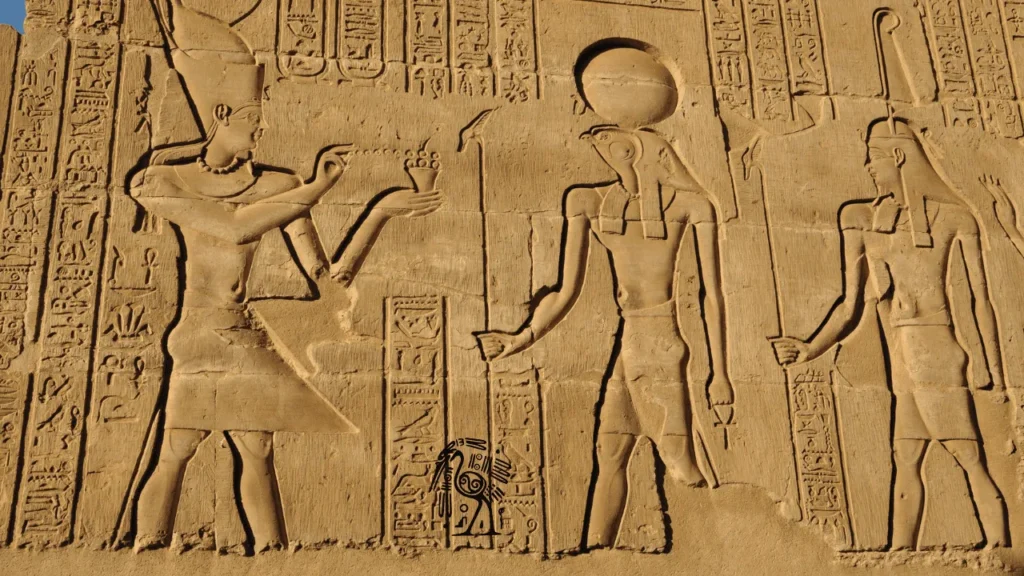Ancient artz provides a glimpse into the cultures, beliefs, and daily lives of civilizations long past. From cave paintings to intricate sculptures, ancient artz serves as a historical record that showcases human creativity and storytelling across different time periods and regions. Each civilization contributed its own distinct style and techniques, leaving a lasting impact on the art world.
The Origins of Ancient Artz
Prehistoric Art
The earliest forms of ancient artz date back to prehistoric times when early humans used natural materials to create cave paintings and carvings. These artworks often depicted hunting scenes, animals, and human figures. The Lascaux Caves in France and the Altamira Caves in Spain contain some of the most famous examples of prehistoric paintings. These artworks reveal the artistic expressions of early humans and their connection to nature and survival.
Mesopotamian Art
Mesopotamia, known as the cradle of civilization, produced some of the most significant contributions to ancient artz. The Sumerians, Akkadians, Babylonians, and Assyrians all developed unique artistic styles. Mesopotamian art featured relief sculptures, cylinder seals, and grand architectural structures like the ziggurats. The Standard of Ur and the Code of Hammurabi are key examples of Mesopotamian artistry that provide insight into their society, laws, and values.
The Magnificence of Egyptian Art
Ancient Egyptian art is one of the most recognizable and well-preserved forms of ancient artz. It was heavily influenced by religious beliefs, with a strong focus on the afterlife. Egyptian artists followed strict conventions, using a combination of frontal and profile perspectives in their paintings and carvings.
Iconic Egyptian Artworks
The Great Pyramids of Giza, the Sphinx, and the tomb paintings of pharaohs like Tutankhamun showcase the grandeur of Egyptian art. Hieroglyphics, which combined writing and illustration, also played a crucial role in recording history and religious texts. Statues and sculptures of gods and rulers, such as the bust of Nefertiti, reflect the precision and skill of ancient Egyptian artisans.
Greek and Roman Contributions to Ancient Artz
Greek Art: The Birth of Classical Beauty
Greek art emphasized idealized human forms, balance, and proportion. The Greeks developed three primary architectural orders: Doric, Ionic, and Corinthian, which influenced Western architecture for centuries.
Notable Greek Artworks
- The Parthenon, a temple dedicated to Athena, remains an architectural marvel.
- The sculptures of Zeus and Athena, as well as the Discobolus (Discus Thrower), exemplify Greek mastery in portraying human anatomy and movement.
- Red-figure and black-figure pottery illustrate mythological scenes and daily life.
Roman Art: Realism and Grandeur
Roman art adopted and expanded upon Greek artistic principles, adding realism and grandeur to sculptures, mosaics, and frescoes. Busts and statues of emperors, like the Augustus of Prima Porta, demonstrate the Roman emphasis on individualism. The Colosseum and Pantheon showcase the architectural ingenuity of the Romans, integrating art with functionality.
The Influence of Ancient Asian Art
Chinese Art
Ancient Chinese art played a crucial role in cultural and philosophical expression. Traditional ink paintings, jade carvings, and bronze artifacts reflect Confucian, Taoist, and Buddhist influences. The Terracotta Army, created for the tomb of Emperor Qin Shi Huang, is one of the most remarkable achievements in ancient artz, symbolizing power and protection in the afterlife.
Indian Art
Ancient Indian art was deeply intertwined with religion, particularly Hinduism and Buddhism. The Ajanta and Ellora caves contain intricate frescoes and rock-cut sculptures depicting Buddhist teachings and mythological stories. The construction of stupas, such as the Great Stupa at Sanchi, illustrates the spiritual significance of art in ancient India.
Japanese Art
Japanese ancient artz includes calligraphy, woodblock prints, and pottery. The Jomon pottery, one of the oldest forms of Japanese art, is known for its elaborate patterns. Traditional ink paintings and folding screens often depicted nature, samurai, and folklore, preserving Japanese cultural heritage.
Mesoamerican and African Art Forms
Mesoamerican Art
Civilizations like the Maya, Aztecs, and Olmecs created impressive sculptures, murals, and pyramids. The Olmec colossal heads, believed to represent rulers, highlight their advanced sculpting skills. Mayan codices and intricate stone carvings document historical events, rituals, and celestial observations.
African Art
Ancient African art was diverse, with each region developing distinct styles. Egyptian art was just one part of Africa’s artistic history. In West Africa, the Nok culture produced terracotta sculptures, while the Kingdom of Benin created intricate bronze plaques. Masks and sculptures played a vital role in spiritual and ceremonial practices, influencing later African artistic traditions.
The Evolution and Preservation of Ancient Artz
As centuries passed, ancient artz continued to evolve, influencing Renaissance, Baroque, and modern artistic movements. Many ancient artworks have been preserved through meticulous restoration efforts and the establishment of museums worldwide. Archaeologists and historians continue to uncover lost masterpieces, further enriching our understanding of ancient cultures.
The Enduring Legacy of Ancient Artz
Ancient artz continues to inspire modern artists and historians, providing invaluable insights into early human civilizations. Museums and archaeological sites preserve these masterpieces, allowing people to appreciate their beauty and historical significance. From prehistoric cave paintings to grand architectural wonders, ancient artz remains a testament to human creativity and cultural evolution.
By studying and preserving ancient artz, we ensure that the artistic heritage of past civilizations remains accessible to future generations. The continued fascination with ancient artz underscores its timeless appeal and the universal human desire to express, create, and leave a lasting legacy through artistic endeavors.

